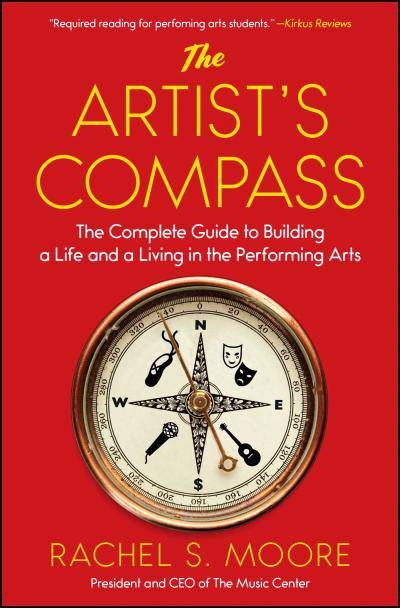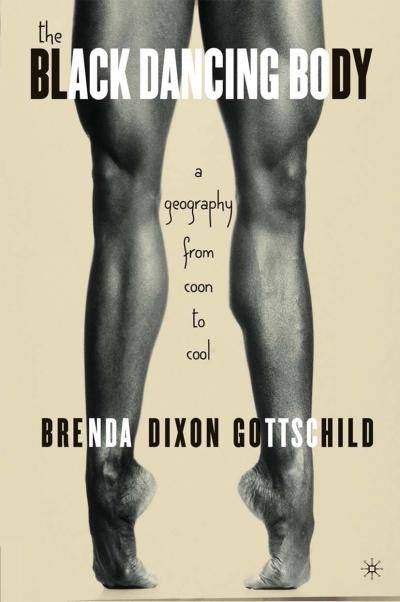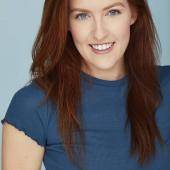If reading more has been on your 2020 bucket list and you’ve not quite gotten around to it yet, don’t worry, October is the perfect time to start - because it’s National Book Month! These recommended reads have something for whichever stage of your dance career (or quarantine) you’re in.
Here are some books to read.
Embrace Your Creativity
The Creative Habit by Twyla Tharp
Leave it to Twyla Tharp to get you motivated to make some art. As one of the few self-help books for artists from the perspective of a choreographer, her anecdotes and practical advice are uniquely relatable for dancers, and she offers many exercises to create your own habitual creative practices. If you need a more structured approach to adding more creativity into your life, this book is for you. The added insight into the life and creative process of this icon of dance is the cherry on top.

Big Magic by Elizabeth Gilbert
While Elizabeth Gilbert writes with the same no-nonsense tone as Tharp, she offers a lighter perspective on creativity that can be helpful for dancers who are feeling the pressure of their art having to make them money. Of the many thought-provoking insights about the creative process in the book, Gilbert strongly suggests we drop our expectations of what creativity or art can give back to us. Translation: stop worrying if your TikTok dance will go viral, especially if that goal is keeping you from creating in the first place.
Art & Fear by David Bayles
This book is perfect for those of us caught up in comparison envy right now, wondering why so many dancers we know are creating concept videos or creative side hustles, yet we can’t seem to take action on our own creative ideas. First, stop scrolling. Second, read this book and realize you're not alone. This book goes deep into why artists don’t make art, offering some Instagram vs. reality-style perspective for anyone battling the many internal and external fears that can stifle creativity.
Manage Your Creative Career, Knowledge is Power!
The Artist's Compass by Rachel Moore
Take it from Rachel Moore, former professional ballerina who became CEO of American Ballet Theatre before her current position as President and CEO of The Music Center in LA - you need to start thinking about the business of being a performing artist. Moore’s perspective as an artist and her journey into arts administration informs her practical advice on what you need to turn your passion into a career, including what skills to hone outside of the studio.

The Profitable Artist by NYFA
If you’ve ever had a question about your dance career, this handbook most likely answers it, aiming to help you bridge the gap between being an artist and making art for a living. It is an in-depth guide to creating a successful career in the arts, with advice from a wide range of professionals and the New York Foundation for the Arts in areas like finance, law, marketing, and fundraising.
Arts & Numbers by Elaine Grogan Luttrull
You might not dance for the money, but you do need money in order to dance. Written by an artist and certified accountant, this book covers everything from budgeting to taxes specifically for freelance artists, and is an accessible introduction to how to take control of your finances for anyone who’d rather just ignore it.
Take Control of Your Health
Dance Anatomy by Jacqui Greene Haas
It makes sense that an artist should really know their instrument - so how well do you know your body? This book is an easily understandable introduction to anatomy and dance conditioning that all dancers should know, from how many times a week to do cardio sessions, to how to properly warm up, to what exercises will help your arabesque line. Knowledge is power, and the information in this book will help empower you to make the healthiest choices for your body.

Dancing Longer Dancing Stronger by Robin Kish & Jennie Morton
Dive even deeper into how to prevent injury and improve your technique with the latest from Chapman University professor Robin Kish and Colburn School professor Jennie Morton. Their extensive experience as dancers and practitioners in dance medicine and science informs this essential text to creating a conditioning program alongside your training that is specific to your needs and goals.
Dancer Wellness by IADMS
If you haven’t heard of the International Association for Dance Medicine and Science, the organization’s website is a treasure trove of dance science information. This book compiles much of that expert research into organized sections on physical and mental health considerations for dancers. With chapters on cross-training, nutrition, and psychological health, this book has everything you need to know to stay healthy. Download the e-book for a more affordable option!
Brush Up on Your Dance History
The Black Dancing Body by Brenda Dixon Gottschild
All dancers should seek to learn about the history of the styles they perform, and this book is essential to understanding how much Black dance has shaped dance in the United States. Exploring the history of Black dancers and choreographers, Dixon Gottschild’s perspective as a dancer, professor, critic, and African-American woman helps shape this illuminating reflection on how Black dance has molded and continues to inform our culture today.

Apollo's Angels by Jennifer Homans
This book encompasses a truly comprehensive history of one of dance’s most traditional forms, written by a former dancer and dance critic. As ballet dancers, ballet companies, and the style itself continues to evolve today, it’s interesting to reflect on its origins and imagine how those traditions will continue to change and influence culture in the future.
The Essential Guide to Jazz Dance by Dollie Henry & Paul Jenkins
We’ve all seen the many types of ‘jazz styles’ listed on class schedules today - lyrical jazz, contemporary jazz, street jazz, commercial jazz, etc. - but what do all those styles mean? What is the origin or definition of jazz dance? This book helps unpack jazz dance’s multilayered history and its evolution into the many ways we incorporate the genre into dance today.
If looking at this list feels overwhelming and you don’t know where to begin, here are some simple ways to help you make reading a habit:
- Start a dancer book club
Gather a few friends for online or socially-distanced book club meetings each month. Pick a date for your meeting and choose someone to prepare questions for the group to discuss the recommended reads. Nothing keeps you motivated like knowing your friends are counting on you! - Borrow from your library
If libraries in your area are closed, many branches offer the option to borrow e-books to download straight to your tablet, e-reader, or smartphone. This is a great way to save money, but another plus to borrowing online or in-person is that you’ll be more accountable to reading the book knowing you have to return it by its due date! - Start a book-stagram or blog
Invite your friends to like an Instagram account or subscribe to a blog where you review the dance books you read! Why not have fun with it? Create your aesthetic, take some stylized flat lay photos of your books, or create your own graphics to write out your reviews or favorite quotes you read. If you have trouble reading on your own, then do it for the ‘gram!
As we finish out these last few months of 2020, let’s stay motivated and get those yearly goals crossed off, starting with the above books to read - learning more about ourselves and dance in the process. Happy National Book Month!



